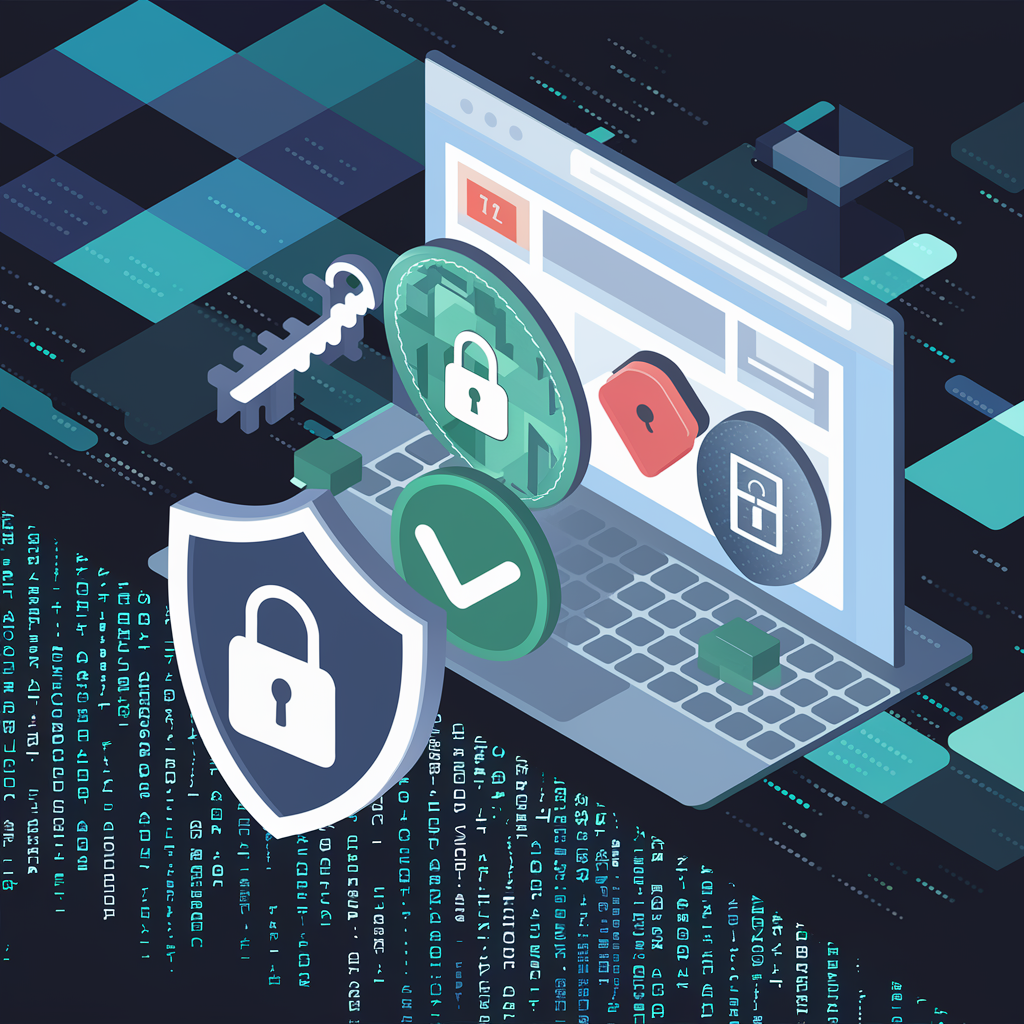In the rapidly evolving landscape of the digital world, its very important to secure your website against cyber threats. Cybersecurity is not a static endeavor but a dynamic commitment that requires continuous effort to protect your digital presence. In this extensive guide, we’ll delve into the 10 best practices for ensuring the security of your website, drawing inspiration from expert advice and industry standards, while expanding on each point to provide a thorough understanding of their significance.
1. Keep Your Software Up to Date
The foundation of a secure website lies in keeping all software components up to date. This includes the website’s operating system, web hosting software, and any plugins or extensions in use. Regular updates often include crucial security patches that serve as a proactive defense against known vulnerabilities. By ensuring that every aspect of your digital infrastructure is regularly updated, you build a robust first line of defense against potential threats.
2. Utilize a Robust Password Manager
The importance of strong, unique passwords cannot be overstated. A robust password manager not only aids in generating complex passwords but also securely stores them. The significance of this practice goes beyond your website; it encompasses all online accounts. Implementing a reliable password manager ensures that your digital keys are intricate and well-protected, serving as a fundamental aspect of your website’s overall security.
3. Implement Two-Factor Authentication (2FA)
Enhancing your website’s security posture involves the adoption of Two-Factor Authentication (2FA). This additional layer of protection necessitates the entry of a secondary code from your mobile device, adding an extra barrier to unauthorized access. 2FA is a powerful tool in fortifying your defenses and making it significantly more challenging for potential attackers to breach your website.
4. Regularly Scan for Malware
Proactive measures are crucial in maintaining the integrity of your website. Regularly scanning your website for malware, utilizing both free and paid tools, is a necessary step in identifying and mitigating potential threats. Swift detection and removal of malicious code are pivotal in safeguarding your site and the sensitive data it holds.
5. Back Up Your Website Regularly
In the unpredictable landscape of cybersecurity, having a reliable backup system is your safety net. Regularly backing up your website ensures that, in the unfortunate event of a security breach, you can swiftly restore your digital assets. This proactive approach minimizes downtime and potential data loss, providing a critical safety measure in the face of unforeseen cyber threats.
6. Employ a Firewall for Added Protection
Think of a firewall as a virtual gatekeeper, preventing unauthorized access to your website. By incorporating a robust firewall, you add an additional layer of defense, thwarting potential threats and ensuring that only legitimate traffic reaches your digital domain. A firewall is an essential component in fortifying your website’s overall security.
7. Limit Login Attempts
Mitigating the risk of brute force attacks is achieved by limiting the number of login attempts. By setting restrictions on login trials, you significantly increase the difficulty for hackers attempting to gain unauthorized access through repeated password guessing. This straightforward yet effective measure adds an extra layer of security to your website.
8. Encrypt Your Website’s Traffic
Protecting your data from prying eyes is paramount in ensuring overall website security. The implementation of encryption protocols, such as HTTPS, guarantees secure communication between your website and its visitors. This is particularly crucial when handling sensitive information, such as user credentials or payment details.
9. Choose a Secure Web Hosting Provider
Your website’s security is only as strong as your hosting provider’s infrastructure. Opt for a reputable web hosting service that places a high priority on security measures. A reliable provider will have robust measures in place, including firewalls, regular security audits, and intrusion detection systems, contributing significantly to the fortification of your digital stronghold.
10. Educate Your Team on how to secure your website
Human error remains a significant factor in cybersecurity breaches. Empower your team by providing comprehensive education on cybersecurity best practices. Ensure that they can identify and promptly report suspicious activities, effectively turning your employees into an additional line of defense against potential threats.
By adopting and consistently implementing these 10 best practices, you establish a resilient defense against the ever-evolving cybersecurity threat landscape. Remember, website security is an ongoing commitment that demands vigilance, proactive measures, and a well-prepared response plan in case of a breach. Fortify your online fortress, and ensure a safe and secure digital experience for both you and your users.
We would like you to explore our diverse array of projects, including an innovative AI-based typing and spell-checking software designed specifically for the Assamese language. We invite you to check out this remarkable project Aakhor and have a first hand experience of it for free .Our commitment to innovation and excellence is evident in the variety of projects we’ve undertaken, each reflecting our dedication to pushing the boundaries of technology. Visit our site’s project section for an in-depth exploration of our work.

